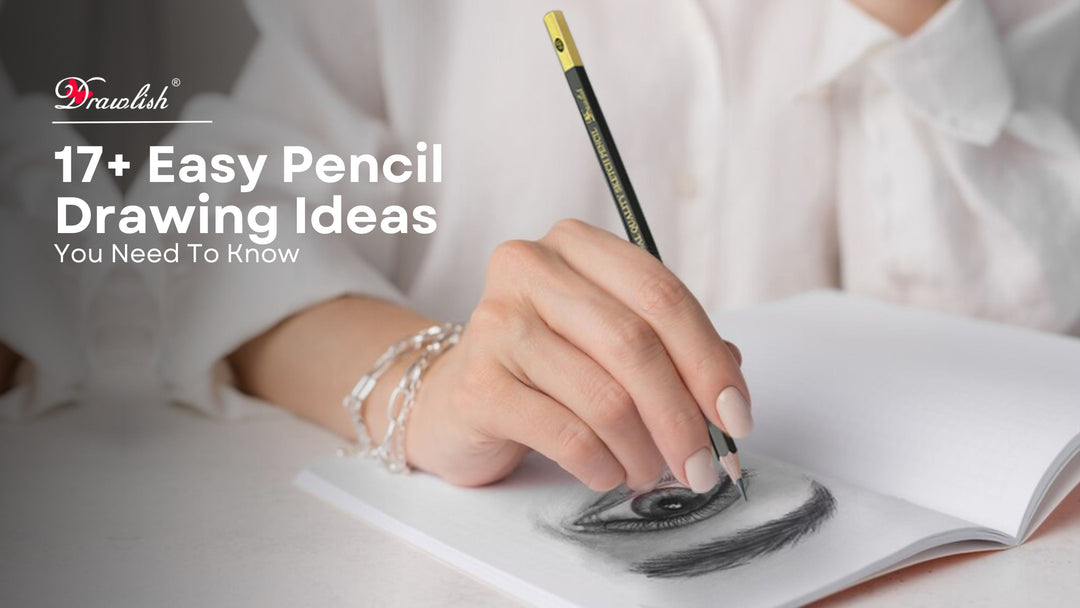How To Paint Floral Painting With Acrylic Paint
Welcome to the colorful world of acrylic floral painting! In this artistic journey, we will explore the joy of creating a beautiful flowers on black chart. Whether you're a beginner or have some experience with painting, this step-by-step guide will help you bring the vibrant hues of nature to life. Get ready to celebrate the beauty of flowers as we delve into the process of sketching, outlining, and coloring. Each stroke on the canvas is an opportunity to express your creativity and capture the essence of the blossoms. So, gather your acrylic paints, brushes, and black chart, and let's begin on this adventure together. Let the petals and colors unfold as we explore the art of floral painting with acrylics!
Needed Materials For This Floral Painting
- Drawlish Acrylic Painting Pens Set of 24
- Acrylic Paint Set: 12 Tubes + 3 Brushes
- Set of 8 Drawing Sketch Pencils
- black chart
Follow This Step By Step Process For Floral Painting
Step 1: Sketch the Outlines
Begin by following a reference video. With a pencil, carefully sketch the outlines of the flowers on your canvas. Pay close attention to the details in the video, ensuring your outlines match those in the reference.
Step 2: Add Bold Borders
Take a black painting pen and trace over the pencil outlines to give them bold borders. Follow the reference video to create intricate designs in the center of the flowers. This step adds definition and detail to your painting.
Step 3: Color the Flowers
Use light yellow, orange, green, and pink acrylic paints to bring your flowers to life. Fill in the outlined shapes with vibrant colors, staying true to the natural hues of the flowers in the reference video. Taking this step is very crucial, because a natural look will be highlighted if you paint correctly, but a failed match will result if you don't, so be careful take your time and be precise.
Step 4: Attach a Black Chart
Cut a piece of black chart paper to match the size of your canvas. Attach it to the canvas using glue, framing your floral painting. Ensure the attachment is neat and aligns with the edges of the canvas.
Step 5: Compare with the Reference
Carefully compare your artwork with the reference video. Pay attention to every tiny detail. If you spot any discrepancies, correct them to match the reference closely. This step ensures accuracy and helps you refine your painting.
Step 6: Embrace Imperfections
Remember, perfection is a journey, not a destination. Don't be discouraged if your first attempt isn't good. Art is about expressing yourself, and mistakes are part of the learning process. Keep trying, learning, and improving with each attempt.
By following these steps, you'll create a beautiful floral painting that celebrates the natural beauty of flowers. Enjoy the creative process, and don't forget that practice makes progress!
Video Tutorial Of This Floral Painting
Avoid These Common Mistake While Painting This Art
Creating a stunning piece of art is an exciting journey, but it's important to be mindful of common mistakes that can hinder your progress. Here's a detailed guide on what to avoid while painting your artwork:
1. Neglecting the Reference Video Details: Ensure you closely follow the reference video when sketching the outlines. Neglecting the intricate details can result in a less accurate representation of the flowers.
2. Rushing Through the Border and Design Phase: Take your time when using the black painting pen for borders and designs. Rushing this step may lead to uneven lines and less appealing central flower designs.
3. Inaccurate Color Application: Be meticulous when applying colors to the flowers. Use the specified light yellow, orange, green, and pink shades to maintain the vibrancy and authenticity of the floral arrangement.
4. Carelessness with Gluing the Black Chart: When attaching the black chart paper, ensure it aligns neatly with the canvas edges. Carelessness in this step may distract from the overall aesthetic of your artwork.
5. Overlooking Details During Comparison: When comparing your artwork with the reference video, pay attention to the smallest details. Overlooking any discrepancies may result in a less refined final product.
6. Frustration with Imperfections: Embrace the fact that perfection is a process, not an immediate achievement. Avoid becoming discouraged by imperfections in your first attempt. Instead, use them as learning opportunities for continuous improvement.
By steering clear of these common mistakes, you'll enhance the quality of your floral painting and enjoy a more rewarding artistic experience. Remember, every stroke contributes to your artistic growth, so take your time and savor the creative journey.







Leave a comment